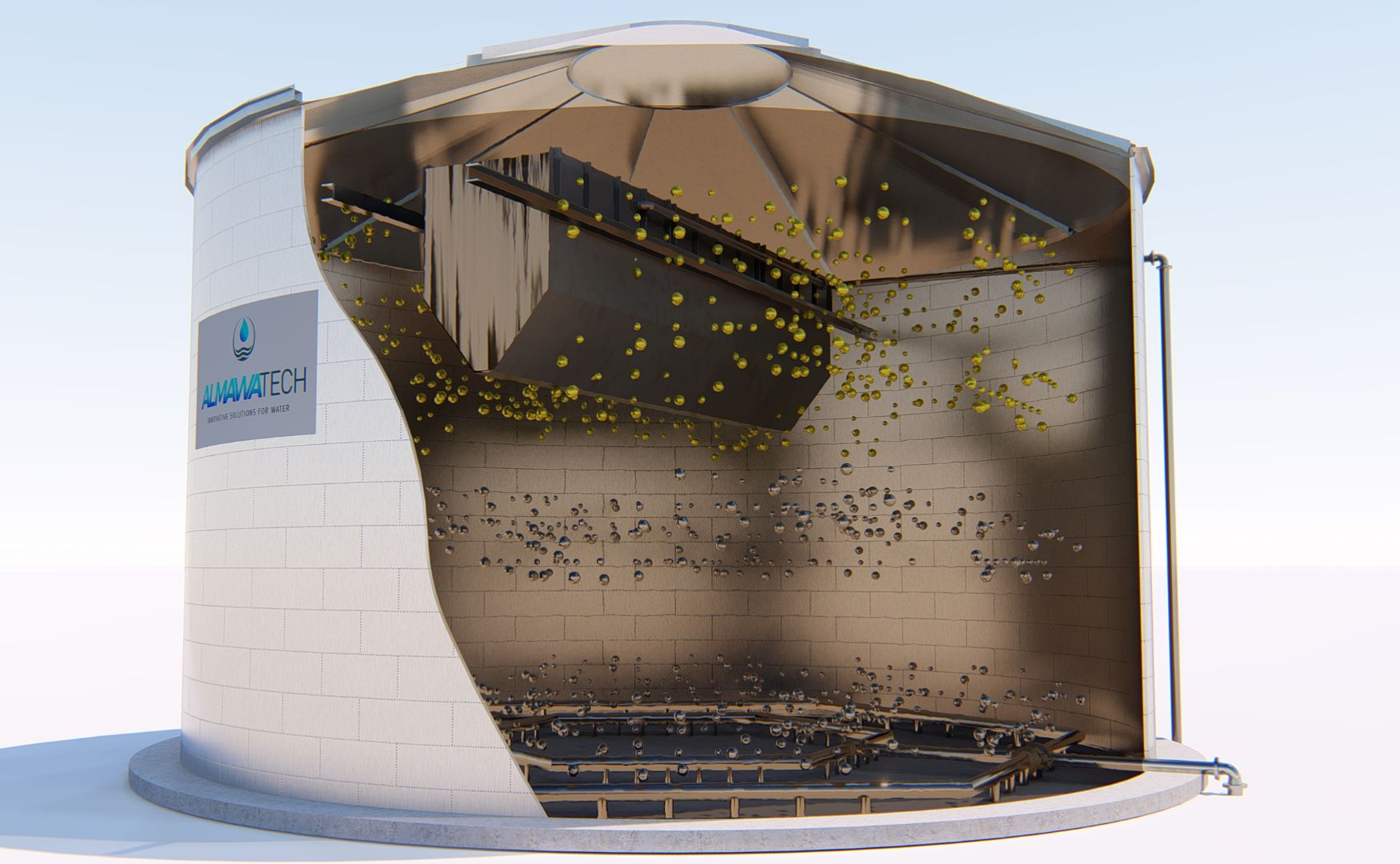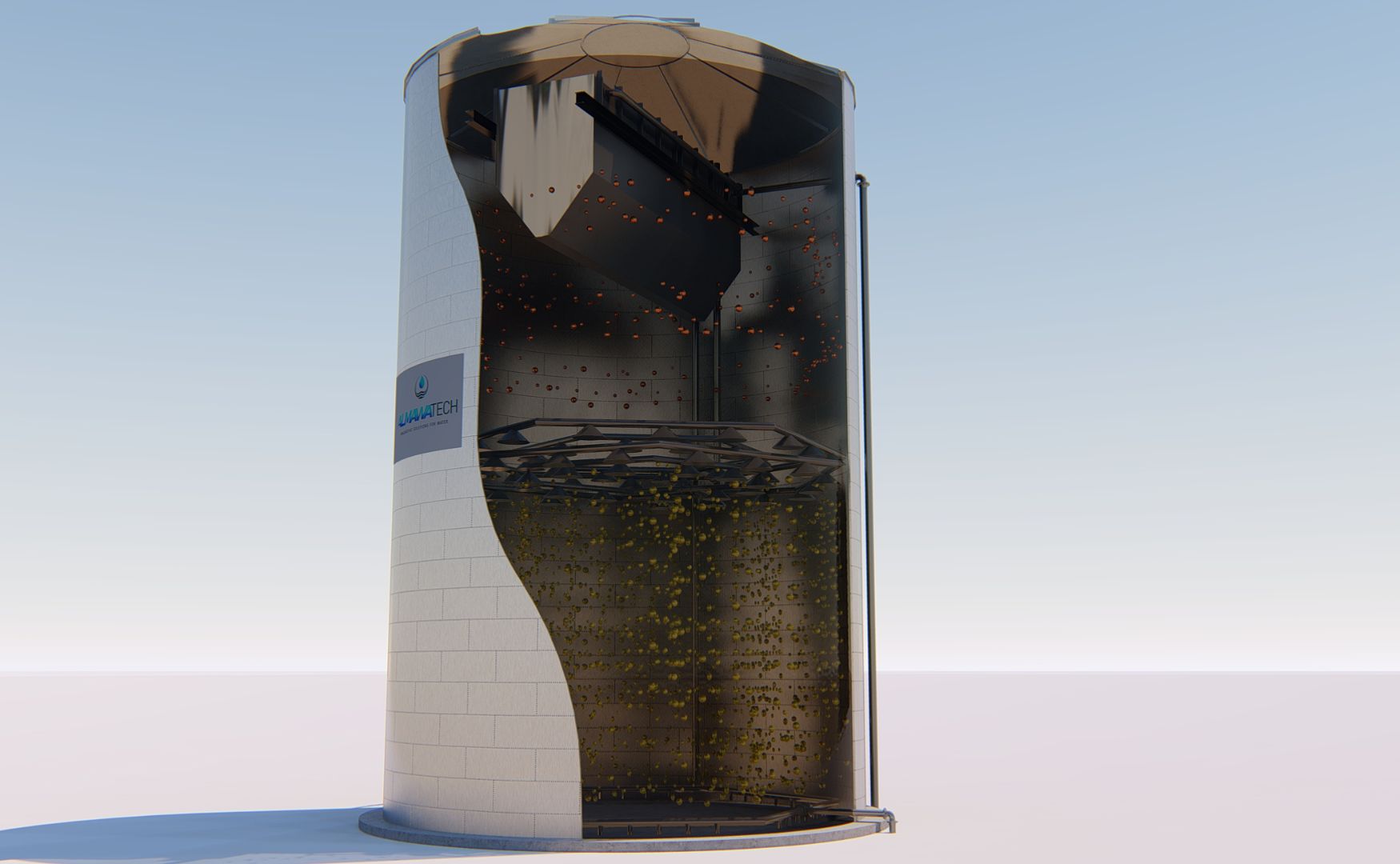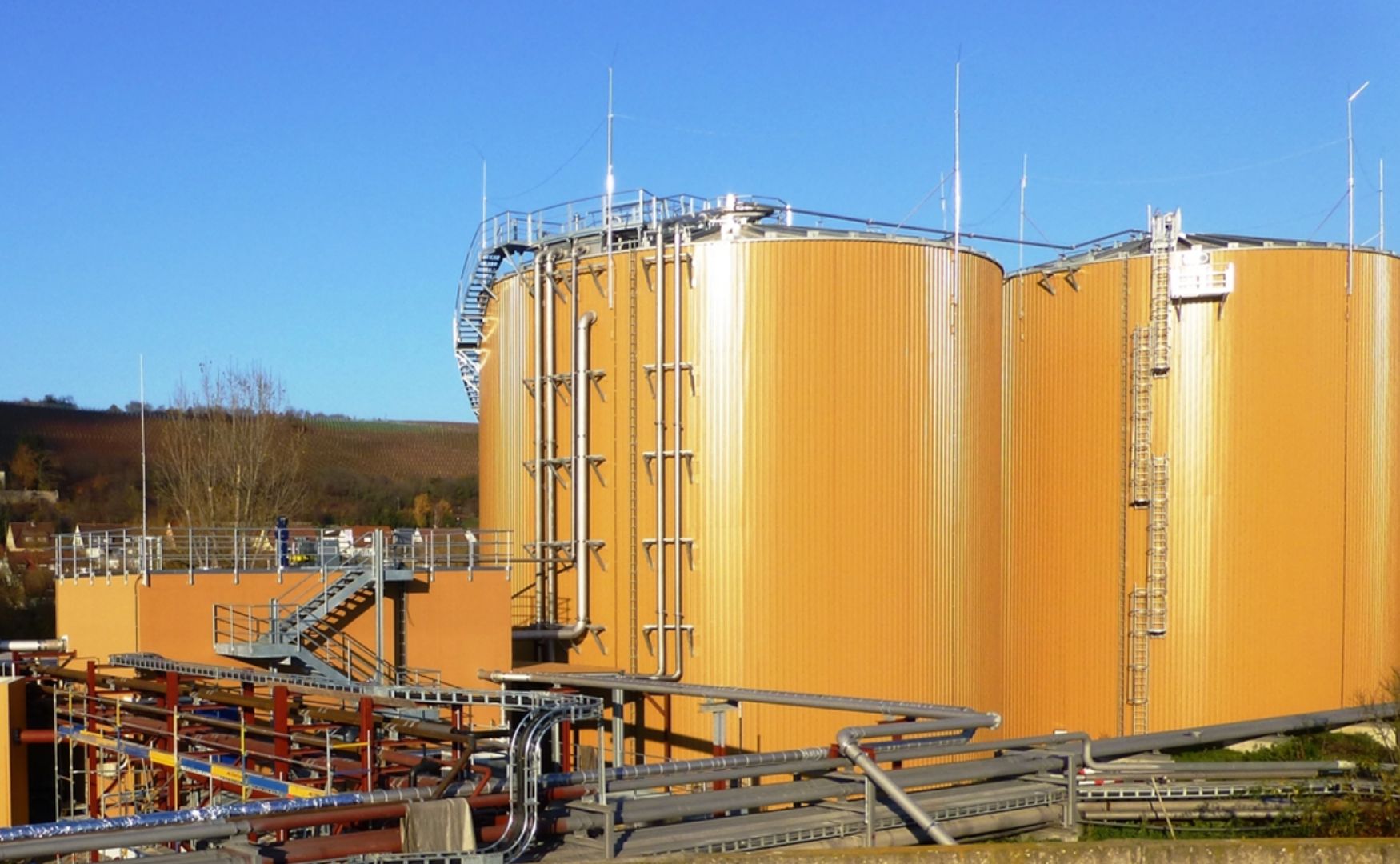An anaerobic reactor is a technical system for treating wastewater or other organic substances under anaerobic conditions - i.e. in the absence of oxygen. In these reactors, special anaerobic microorganisms break down the organic compounds contained in the wastewater and produce biogas, which mainly consists of methane (CH₄) and carbon dioxide (CO₂). Anaerobic reactors are widely used in industrial wastewater treatment, especially in sectors with heavily contaminated wastewater such as the food industry, the paper industry and the chemical industry.
Table of contents
Technical background
In anaerobic processes, special microorganisms known as anaerobic bacteria use alternative electron acceptors instead of oxygen for their metabolism. These microorganisms break down organic compounds such as carbohydrates, fats and proteins in the absence of oxygen. The process takes place in several stages:
Hydrolysis: Complex organic compounds, such as fats and proteins, are broken down into simpler molecules such as fatty acids, amino acids and sugars.
Acidogenesis: The molecules formed during hydrolysis are further converted into organic acids, alcohols, hydrogen and carbon dioxide.
Acetogenesis: Organic acids and alcohols are broken down by acetogenic bacteria to acetic acid (acetate), hydrogen and carbon dioxide.
Methanogenesis: In the final stage, methanogenic bacteria produce the end product methane (CH₄) and carbon dioxide (CO₂) from acetic acid and hydrogen.
This multi-stage process leads to the production of biogas, which consists of around 60-70% methane and can be used to generate energy. At the same time, organic impurities are removed from the wastewater, which significantly reduces the biochemical oxygen demand (BOD5) and the chemical oxygen demand (COD).
Anaerobic processes in practice
Anaerobic processes are particularly common in the treatment of highly organically contaminated wastewater and organic waste in various industries. The most important applications include
1. anaerobic wastewater treatment
Anaerobic reactors are often used in food and beverage industries, dairies, paper mills and biogas plants to break down organic substances in wastewater and simultaneously generate energy in the form of biogas. Typical reactors for anaerobic processes are
UASB reactors (Upflow Anaerobic Sludge Blanket):
The UASB reactor (Upflow Anaerobic Sludge Blanket) is an anaerobic reactor technology characterized by efficient wastewater treatment and biogas production. The wastewater flows in a counter-current principle from the bottom to the top of the reactor, where it meets a sludge layer consisting of granulated anaerobic microorganisms. These microorganisms break down the organic substances in the wastewater under anaerobic conditions and produce biogas, which consists mainly of methane and carbon dioxide.
Technical specifications:
- Flow direction: From bottom to top (upflow)
- Hydraulic dwell time: Typically between 6 and 12 hours
- Organic loading rate: Up to 10 kg COD/m³-d
- Temperature range: Can be operated in both mesophilic (30-40°C) and thermophilic (50-60°C) areas
- Gas production: 0.25 to 0.35 m³ of biogas per kg of degraded COD

Photo: Schematic representation of our ALMA BIO UASB reactor
EGSB reactors (Expanded Granular Sludge Bed):
The EGSB reactor (Expanded Granular Sludge Bed) is a further development of the UASB reactor and is characterized by a higher flow rate and better mixing. In the EGSB reactor, the wastewater is fed through the granulated sludge layer at a higher speed, which reduces the hydraulic retention time and increases the organic load. This improved fluid circulation and expansion of the sludge bed makes the reactor more efficient, especially for wastewater with a very high organic load.
Technical specifications:
- Flow direction: From bottom to top, similar to the UASB reactor, but with a higher flow velocity.
- Hydraulic retention time: Typically between 1 and 6 hours, depending on the wastewater composition.
- Organic loading rate: Up to 30 kg COD/m³-d
- Reactor height: EGSB reactors are typically higher than UASB reactors, which leads to better separation of sludge and wastewater.
- Gas production: Similar to the UASB reactor, with a gas production of around 0.3 to 0.35 m³ of biogas per kg of degraded COD.

Photo: Schematic representation of our ALMA BHU BIO EGSB reactor
Gas mixing reactors:
- In our ALMA BHU GMR (gas mixing reactor), the wastewater is treated efficiently under anaerobic conditions, whereby the reactor was specially developed for wastewater with high calcium concentrations. The advanced gas mixing technology of the ALMA BHU GMR ensures optimum mixing of the reaction gases in the wastewater, which greatly improves the biodegradation and precipitation of calcium.The reactor offers a particularly efficient solution for wastewater that is difficult to treat due to its high calcium content. It not only reduces the organic load of the wastewater, but also enables targeted calcium precipitation, which prevents deposits in downstream systems. This ensures stable operation and significantly reduces maintenance costs. The ALMA BHU GMR is therefore ideal for industrial applications where high calcium concentrations in wastewater are a key challenge.

Photo: Photos of our anaerobic gas mixing reactor ALMA BHU GMR
2. sludge stabilization
In municipal and industrial sewage treatment plants, the sewage sludge produced is stabilized in anaerobic digesters. Here, organic compounds in the sludge are broken down under oxygen-free conditions, reducing the solids content of the sludge and producing biogas. This process helps to generate energy and reduce the volume of sludge, which lowers disposal costs.
Advantages of anaerobic processes
High energy efficiency:
- By generating biogas, anaerobic wastewater treatment can cover a large part of a plant's energy requirements or even produce surplus energy.
Lower oxygen demand:
- As anaerobic processes do not require oxygen, they are particularly advantageous in areas where the energy required for aeration in aerobic processes is high.
Reduction of sludge:
- Compared to aerobic processes, anaerobic systems produce less excess sludge, which reduces the costs for sludge treatment and disposal.
Degradation of poorly degradable organic compounds:
- Anaerobic microorganisms are also able to utilize organic substances that are difficult to break down, which makes these processes particularly valuable in certain industrial waste.
Challenges of anaerobic processes
Longer response times:
- Anaerobic processes are often slower than aerobic processes, which can lead to longer residence times and larger reactor volumes.
Sensitivity to toxic substances:
- Anaerobic microorganisms are more sensitive to toxic substances in wastewater, which can lead to process disturbances. This requires careful monitoring and control of the feed concentrations.
Conclusion
Anaerobic processes are an efficient and environmentally friendly method of reducing organic pollution and generating energy in industrial water and wastewater treatment. By using anaerobic technologies, industries can not only reduce wastewater treatment costs, but also contribute to sustainability by using biogas as a renewable energy source. The application in anaerobic reactors such as UASB, EGSB or in mixed gas reactors makes these processes particularly suitable for wastewater with a high organic content.
For further information on our products, please feel free to contact us at any time!







